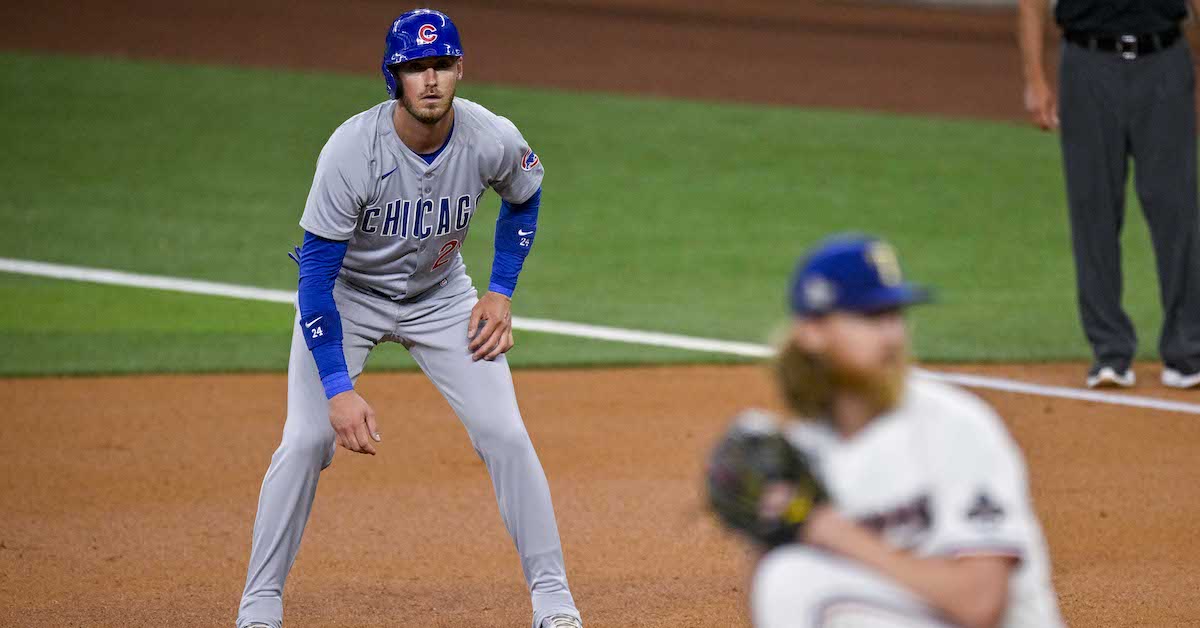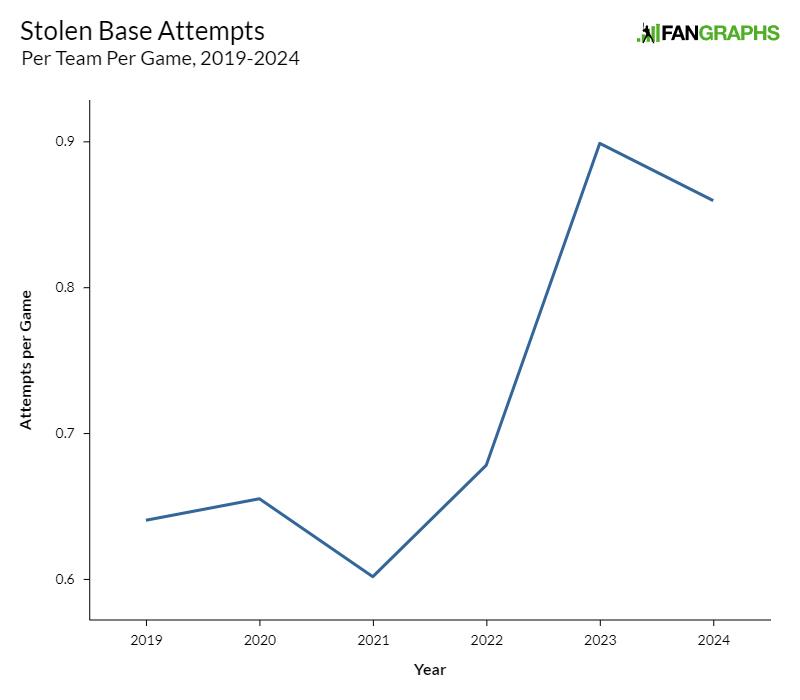
Jerome Miron-USA TODAY Sports
This time last year, baseball discussion was focused on one thing: steals. There they were, in great huge quantities for the first time in decades. With disengagements and therefore pickoff throws limited, men on base ran wild. They were successful at a huge clip, to boot. By year’s end, last season’s 3,503 stolen bases were the most in any campaign of the 21st century.
The wildest part about this statistic is that it felt like there still weren’t enough steals. Runners were successful at an 80.2% clip last year. That’s quite a bit higher than the breakeven rate of success, which bounces around the 75% mark based on game state; after all, not all steals are created equal. Russell Carleton dug into the data and noted that runners didn’t change their aggression at all until they had seen at least one pickoff throw.
Meanwhile, their success rate on the instances where the pitcher *didn’t* throw over ballooned to nearly 83%. You didn’t have to be a rocket scientist to figure out where this was going. In 2024, the thinking went, runners would have more experience with the new rules, and therefore would start taking off more frequently, pickoff throw or no pickoff throw. Naturally, new rules take a while to adjust to, but this adjustment seemed pretty likely to happen.
So far, though, it hasn’t. Here are stolen base attempts per game over the last six years. I threw in some old years for scale, but really I’m only concerned with 2023 and 2024:

The units on this one are stolen base attempts per team per game, which is the most intuitive way to think about it for me. Runners are attempting to steal slightly less frequently. So is their success rate going up? Nope:

That’s weird. These things are, at least theoretically, working in opposition. The more bases runners try to steal, the worse their opportunities get, because they were already taking all the good ones. Likewise, if runners get more cautious, they’re presumably giving up the hardest opportunities for steals rather than the easiest, which means success rate should increase. We aren’t seeing either effect so far, though.
What gives? I can tell you that pickoff throws have increased from 1.96 per team per game to 2.13, but that’s not exactly a huge change. It’s also not clear which way that effect should go; in last year’s data, more pickoff throws meant more attempts but a lower success rate. This year, that hasn’t been the case. Pitchers are throwing over to first (and, occasionally, second and third) more frequently, but they aren’t paying for it with increased stolen base attempts. One note: I excluded pickoff throws that resulted in an error and base advancement, because those don’t result in increased chances of a steal; the base has already been conceded by the error.
One potential reason for this running slowdown is that the guys behind the plate are getting better. If you take all the throws down to second by all the catchers in baseball this year and average them up, the pop time across the majors is 1.945 seconds. Last year, that number was 1.96 seconds. In 2022, it stood at 1.98 seconds. In other words, catchers are getting the ball down to second base more rapidly than ever. That’s coming in two places. Existing catchers are throwing faster, but the population of catchers is also changing. Catchers who have at least one recorded throw in 2023 and 2024 have decreased their pop time by .005 seconds on (weighted) average. That’s tiny, of course. The rest of the improvement has come from guys with big arms getting more playing time behind the dish.
Another possible reason: Maybe there are just fewer chances to steal. Leaguewide, OBP sits at .318 so far this year, down from .320 last year. That’s probably not enough of a change to matter, but I still looked into it. To do so, I scraped all of this year’s game logs and looked for two things. First, I looked for the number of plate appearances where there was a runner on first with no runner on second. This excludes the back side of second-and-third double steals, which aren’t really what we’re looking for. Next, I looked for the number of stolen base attempts in those situations.
Take these numbers with a grain of salt, because I think that my method will occasionally mess up the denominator when weird and rare events that don’t end a plate appearance happen, but the results are pretty clear. The rate at which players attempted a steal with second base open jumped massively between 2022 and 2023. That came after a mostly static rate for a decade or so; the new rules made for more steals, just like you’d expect. From 2023 to 2024, that rate has declined slightly, falling by 20% of the gap between 2022’s and 2023’s rates. In other words, baserunners are being less aggressive when given the same opportunities.
Maybe what we’re really seeing is that 2023 was closer to equilibrium than anyone expected. Baserunners weren’t the only ones who were trying out these new rules for the first time – pitchers and catchers were also adapting. Or maybe it’s just April. The stolen base attempt rate was actually lower at this time last year than it is so far in 2024, while success rate was meaningfully higher. There’s plenty of time for more data to emerge. The only thing that seems certain, so far, is that offseason expectations for a massively increased running game haven’t come to pass.
All statistics in this article are current through games played on April 9th.
Source
https://blogs.fangraphs.com/the-stolen-base-explosion-hasnt-continued/
 Backyard GrillingWeekend WarriorsAdvice from DadBeard GroomingTV Shows for Guys4x4 Off-Road CarsMens FashionSports NewsAncient Archeology World NewsPrivacy PolicyTerms And Conditions
Backyard GrillingWeekend WarriorsAdvice from DadBeard GroomingTV Shows for Guys4x4 Off-Road CarsMens FashionSports NewsAncient Archeology World NewsPrivacy PolicyTerms And Conditions
